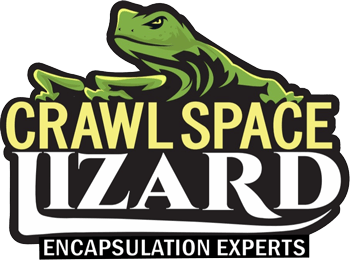Vapor Barrier
Crawl Space Encapsulation: Vapor Barrier
In the residential building industry, there are a sufficient number of contentious building practices, incorrect product applications, outmoded building codes, and urban legends to confuse anyone who is looking for the proper way to construct. Vapor barriers are very high on that particular list. Very few builders have a solid understanding of how they operate and the rationale behind their use. The fact that the location of the home is a factor in determining whether or not a vapor barrier should be installed adds to the confusion that already exists in this situation. Unfortunately, this misunderstanding can lead to catastrophic failures of the envelope as well as issues with mold.
What kinds of materials make up vapor barriers?
Polyethylene, asphalt-impregnated or asphalt-coated kraft paper, and foil skrim kraft paper backed aluminum have all been common choices for use as vapor barrier materials over the course of the past several decades.
Should I Install a vapor barrier in my house?
Inside of buildings, vapor barriers offer protection against the growth of mold and rot by preventing the accumulation of condensation and moisture that could otherwise deteriorate the building materials. When constructing a house in an area that has a high average relative humidity, installing a vapor barrier can be an important step in preventing issues that are brought on by an excessive amount of moisture in the air.
What exactly is the function of the vapor barrier?
The primary function of a vapor barrier is to prevent and reduce the likelihood of vapor diffusion occurring through the space behind it. It is typically made of polyethylene sheeting and consists of a very thin layer of an impermeable material. During the construction phase of a building, a vapor barrier is installed to protect the building's fabric from being harmed by excess moisture.
Where is the best place to install the vapor barrier?
In most cases, the best place to install a vapor barrier is on the side of the wall that is subjected to the hotter temperatures and the more humid conditions. This would be the inner surface in climates with colder temperatures, and the outer surface in climates with hotter temperatures and more humid conditions. In preexisting environments, an effective moisture barrier can be achieved with oil-based paints or vapor barrier.
Is drywall capable of acting as a vapor barrier?
Unpainted drywall has a very high permeance, which ranges anywhere from 20 to 90, indicating that it is not at all effective as a vapor retarder. Under the same conditions, a sheet of drywall with a hole measuring one square inch can allow 30 quarts of water vapor to pass through the hole caused by air leakage. Comparing one-thirtieth of a quart to thirty full quarts.
Contact Crawlspace Lizard Today!
Crawlspace Lizard will do everything we can to ensure your experience with us is excellent.
Request A FREE Estimate
Request a Free Estimate Form
We will get back to you as soon as possible.
Please try again later.
Our Main Office Location
Crawlspace Lizard is a specialty crawl space waterproofing company that services the Roswell, GA and surrounding areas.
CONTACT INFORMATION
Phone: (678) 878-0730
Email: crawlspacelizard@gmail.com
Address: 875 Old Roswell Rd F-200, Roswell, GA 30076
Business Hours:
Mon-Fri: 8:00 AM - 5:00 PM
Sat-Sun: Closed
All Rights Reserved | Crawlspace Lizard
Privacy Policy | Terms & Conditions | Sitemap
